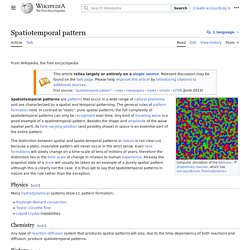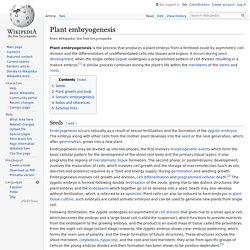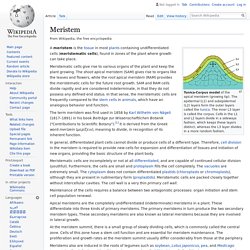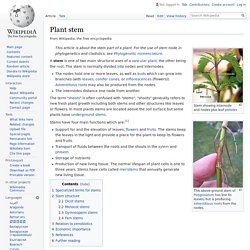

$10 Smartphone to Digital Microscope Conversion!: 9 Steps (with Pictures) A-380 800 GIGANTIC XXXL 71KG RC SCALE 1:15 MODEL AIRLINER FLYING DISPLAY / Hausen am Albis 2015. GIANT SCALE: 47 lbs TURBINE (93,000 RPM) Marines 875-Size (CH-53D) Heli. Firing up and running the Canadian National #6060 4-8-2 live steam locomotive. The amazing Do Nothing Machine at the Museum of Craftsmanship. Whiskey River Railway Day 2014. Live Steam Over Memorial Day. Radio Controlled 5 inch Gauge Ex-LMS Black 5 44873 Hauling a Freight Train - Live Steam Locomotive.
8th Llanelli & District Miniature Steam Rally (The Trains) 28th & 29th/09/2013. Flintridge & Portola Valley - firing up the bumblebee #268 - live steam. How To Fire A Steam Locomotive V2.0 In HD. 1/3 scale Darjeeling Himalayan Railway B-Class Steam Locomotive in 7.25" gauge. Swanton Pacific Railroad Live Steam 19" gauge. Live Steam West Valley Consolidation 2-8-0 first steam trial. Grow Transparent Single Crystals of Alum salt at Home! Grow Transparent Single Crystals of Alum salt at Home! Grow Purple Single Crystals of Salt at Home! DIY Home Decorations! Simulated growth of plants - Wikipedia.
The simulated growth of plants is a significant task in of systems biology and mathematical biology, which seeks to reproduce plant morphology with computer software.

Electronic trees (e-trees) usually use L-systems to simulate growth. L-systems are very important in the field of complexity science and A-life. A universally accepted system for describing changes in plant morphology at the cellular or modular level has yet to be devised. [1] The most widely implemented tree-generating algorithms are described in the papers "Creation and Rendering of Realistic Trees", and Real-Time Tree Rendering 'Weeds', generated using an L-system in 3D. The realistic modeling of plant growth is of high value to biology, but also for computer games. Theory + Algorithms[edit] A biologist, Aristid Lindenmayer (1925–1989) worked with yeast and filamentous fungi and studied the growth patterns of various types of algae, such as the blue/green bacteria Anabaena catenula. SuperVision+ Magnifier on the App Store.
Luciano Informática - Use seu celular como um microscópio ou lupa para eletrônica. Algorithmic Botany: Publications. Algorithmic Botany: Home. Simulated growth of plants - Wikipedia. Plant anatomy - Wikipedia. Portal:Plants - Wikipedia. Different types of leaves with names - Pesquisa Google. Spatiotemporal pattern - Wikipedia. Exception or rule?

[edit] Physics[edit] Many hydrodynamical systems show s.t. pattern formation: Agnes Arber - Wikipedia. Agnes Robertson Arber FRS (23 February 1879 – 22 March 1960) was a British plant morphologist and anatomist, historian of botany and philosopher of biology.

She was born in London but lived most of her life in Cambridge, including the last 51 years of her life. She was the first woman botanist to be elected as a Fellow of the Royal Society (21 March 1946, at the age of 67) and the third woman overall. Plant embryogenesis - Wikipedia. Plant embryogenesis is the process that produces a plant embryo from a fertilized ovule by asymmetric cell division and the differentiation of undifferentiated cells into tissues and organs.

It occurs during seed development, when the single-celled zygote undergoes a programmed pattern of cell division resulting in a mature embryo.[1] A similar process continues during the plant's life within the meristems of the stems and roots. Seeds[edit] Embryogenesis occurs naturally as a result of sexual fertilization and the formation of the zygotic embryos.
The embryo along with other cells from the mother plant develops into the seed or the next generation, which, after germination, grows into a new plant. Embryogenesis may be divided up into two phases, the first involves morphogenetic events which form the basic cellular pattern for the development of the shoot-root body and the primary tissue layers; it also programs the regions of meristematic tissue formation. Stem cell - Wikipedia. There are three known accessible sources of autologous adult stem cells in humans: Bone marrow, which requires extraction by harvesting, that is, drilling into bone (typically the femur or iliac crest).Adipose tissue (lipid cells), which requires extraction by liposuction.Blood, which requires extraction through apheresis, wherein blood is drawn from the donor (similar to a blood donation), and passed through a machine that extracts the stem cells and returns other portions of the blood to the donor.

Stem cells can also be taken from umbilical cord blood just after birth. Of all stem cell types, autologous harvesting involves the least risk. By definition, autologous cells are obtained from one's own body, just as one may bank his or her own blood for elective surgical procedures. Adult stem cells are frequently used in various medical therapies (e.g., bone marrow transplantation). Meristem - Wikipedia. A meristem is the tissue in most plants containing undifferentiated cells (meristematic cells), found in zones of the plant where growth can take place.

Meristematic cells give rise to various organs of the plant and keep the plant growing. The shoot apical meristem (SAM) gives rise to organs like the leaves and flowers, while the root apical meristem (RAM) provides the meristematic cells for the future root growth. SAM and RAM cells divide rapidly and are considered indeterminate, in that they do not possess any defined end status. In that sense, the meristematic cells are frequently compared to the stem cells in animals, which have an analogous behavior and function.
The term meristem was first used in 1858 by Karl Wilhelm von Nägeli (1817–1891) in his book Beiträge zur Wissenschaftlichen Botanik ("Contributions to Scientific Botany").[1] It is derived from the Greek word merizein (μερίζειν), meaning to divide, in recognition of its inherent function. Plant anatomy - Wikipedia. Plant stem - Wikipedia. This article is about the stem part of a plant.

For the use of stem node in phylogenetics and cladistics, see Phylogenetic nomenclature. A stem is one of two main structural axes of a vascular plant, the other being the root. The stem is normally divided into nodes and internodes: The nodes hold one or more leaves, as well as buds which can grow into branches (with leaves, conifer cones, or inflorescences (flowers)). Adventitious roots may also be produced from the nodes.The internodes distance one node from another. Plant morphology - Wikipedia. Scope[edit] Plant morphology "represents a study of the development, form, and structure of plants, and, by implication, an attempt to interpret these on the basis of similarity of plan and origin.

"[3] There are four major areas of investigation in plant morphology, and each overlaps with another field of the biological sciences. Resultados da Pesquisa de imagens do Google para. Luciano Informática - Use seu celular como um microscópio ou lupa para eletrônica. CÓMO HACER UN VIDEOMICROSCOPIO CASERO CON UN SMARTPHONE. CÓMO HACER UN VIDEOMICROSCOPIO CASERO CON UN SMARTPHONE. Succulent anatomy. Plantas suculentas. Plantas suculentas. Resultados da Pesquisa de imagens do Google para. Esses bolos inspirados em suculentas vão te dar água na boca. O Virgula sabe o quanto sua segurança e sua privacidade são importantes e se preocupa muito com isso.

Para garantir a sua tranqüilidade, o Virgula divulga uma série de normas que todo usuário deve seguir e os compromissos que o Virgula estabelece para garantir sua privacidade. Quais são os compromissos que o Virgula estabelece com o usuário, para garantir sua segurança e privacidade? 1. Não divulgar sem prévia autorização, em hipótese alguma, o e-mail do internauta que se cadastrar em páginas que requerem preenchimento de dados pessoais - como a participação em promoções. 2.
Não revelar sem prévia autorização, em hipótese alguma, o e-mail do internauta a outras empresas. 3. O que não se deve fazer ao usar os serviços do Virgula? 1. MICROSCOPIO CASERO DE 10.000 AUMENTOS - HOME OF 10.000 X MICROSCOPE. Microscópio Estereoscópico Com Zoom 100x - R$ 2.800,00 em Mercado Livre.